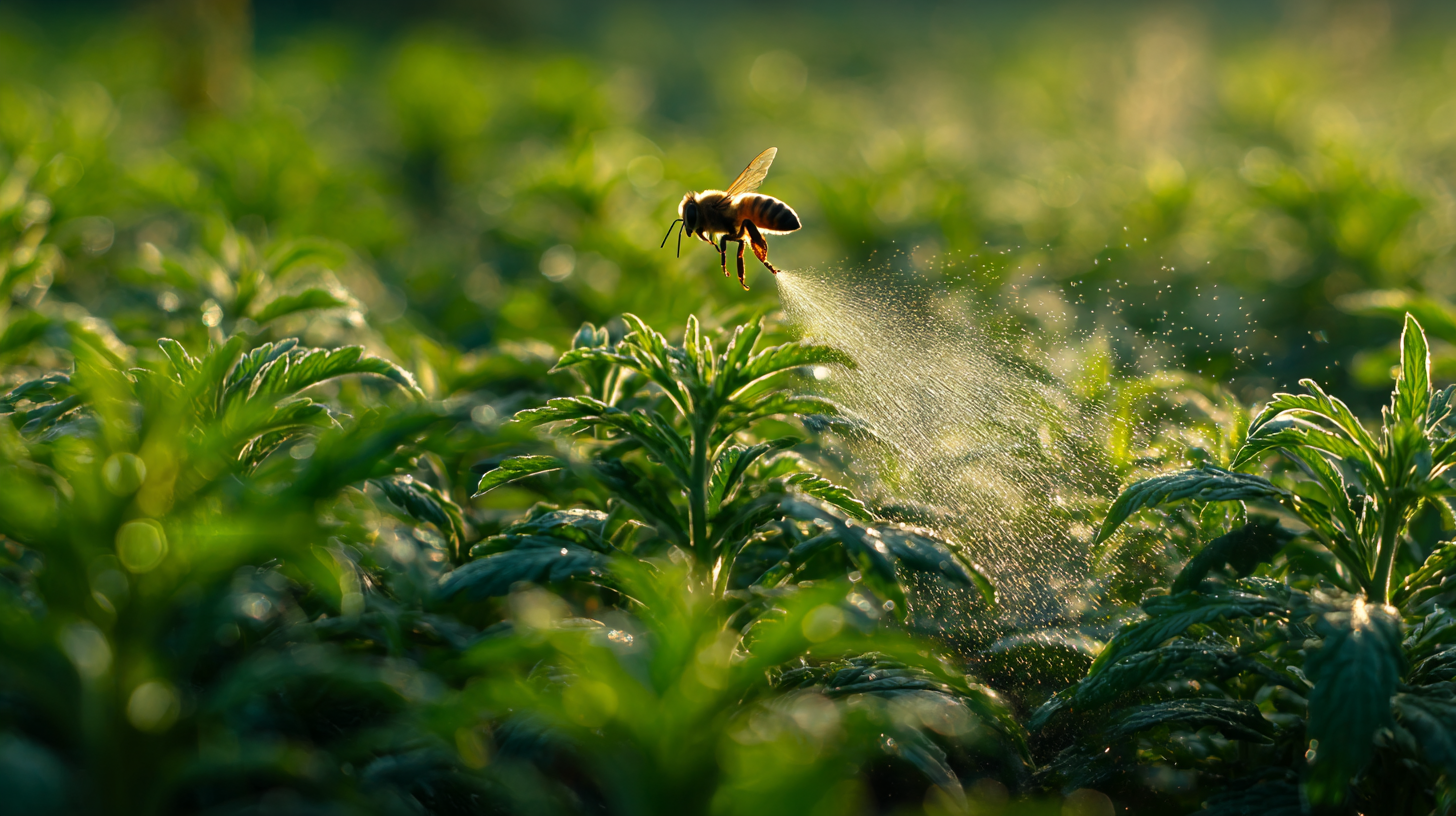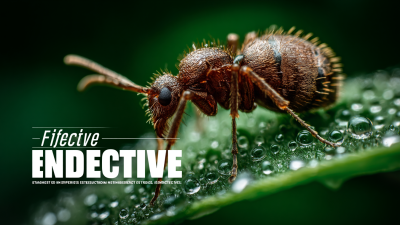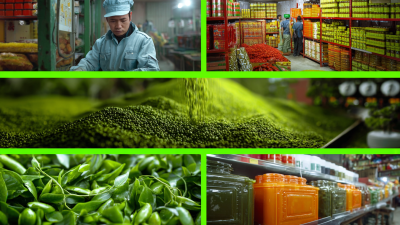 0551-68500918
0551-68500918 





As the Global Insecticide market keeps evolving, it's pretty clear that adopting sustainable farming practices is more important than ever. With growing concerns around food security and the environment, farmers and industry players alike are looking for smarter solutions. According to a recent report, the worldwide insecticide market is expected to hit around $18.5 billion by 2025—that’s a lot of farm work focused on pest control! Companies like Innovation Meiland (Hefei) Co., LTD. are leading the charge here, pushing for new pesticide formulas that not only boost crop yields but also stay friendly to the planet. When farmers choose high-quality manufacturers and carefully compare different insecticide options, they can make smarter decisions—ones that help them meet their economic goals without sacrificing environmental responsibility. In this blog, I’ll be diving into some effective strategies for making the most of insecticide solutions within sustainable agriculture practices.

In today’s competitive world of sustainable farming, after-sales support has become a pretty big deal in the insecticide market. A report from the Global Pest Control Market shows that good support after the purchase can boost customer satisfaction by nearly 30%. That’s a big deal because it tends to build loyalty—people keep coming back and buying again. Farmers aren’t just looking for products; they want ongoing help to make sure they’re using insecticides right. This means guidance on how to apply the products properly and advice on integrated pest management strategies—stuff that’s super important to get the most out of the insecticides while also being kind to the environment.
Plus, a study by Research and Markets suggests that the worldwide market for agricultural insecticides could hit around $8.3 billion by 2026. That just highlights how vital solid after-sales services are. They give farmers the tools and knowledge they need to tackle pest problems responsibly. Good training programs and responsive customer service really make a difference—helping farmers get the hang of using products effectively, which means better crop yields and more sustainable farming practices. In a time when ecological concerns are everywhere, after-sales service isn’t just about support—it’s a key part of making agriculture more sustainable overall.
When it comes to sustainable farming, understanding what it costs to fix issues caused by insecticide use is pretty important for farmers trying to keep things profitable while also being eco-friendly. Recent reports from the EPA warn that misusing traditional insecticides can seriously mess up the soil over time and even make pests more resistant, which then jacks up costs in the long run. On the flip side, a study by the World Bank points out that farms using integrated pest management (IPM) techniques can cut their insecticide spending by up to 30%. Plus, they often see better crop yields and healthier soil — it's a win-win.
Here's a tip: to keep repair costs down, farmers should keep a close eye on pest populations and only spray when it's really needed. This approach helps save resources and makes it less likely pests will develop resistance.
Another cool development is the rise of biopesticides. The Global BioPesticides Market Report expects the market to grow by over 15% each year, showing more folks are shifting towards greener pest control methods. By using biopesticides, farmers can still keep pests in check without the hefty costs tied to equipment repairs or chemical applications.
And here’s one more tip: teaming up with agricultural advisors can really help you pick the right biopesticide for your specific crops, which can save a bunch of money that might get wasted on ineffective products or methods.

When it comes to sustainable farming, using insecticides wisely is pretty important. It’s all about protecting crops without harming the environment too much. For example, many farmers have been getting the hang of integrated pest management, or IPM for short. Take vegetable farms, for instance — they often mix biological controls with targeted insecticide use. This kinda combo helps keep pest numbers down while also saving those helpful insects that play a part in keeping the ecosystem balanced.
Here’s a pro tip: always choose insecticides that are less toxic to non-target creatures, and try to combine their use with other pest management practices. That way, you’re building a more resilient and eco-friendly farming system.
Companies like Innovation Meiland (Hefei) Co., LTD. are leading the way with this sustainable approach. They develop advanced pesticides that focus on both safety and efficiency. Their commitment to research and innovative formulations makes it easier for farmers to stick to eco-friendly practices. Plus, using tools like pheromone traps to keep tabs on pest populations can really help farmers decide when and how much insecticide to apply — making the whole process smarter.
Another handy tip: regularly monitor pest levels. Keeping an eye on pests can really boost how effective your insecticide applications are and even help you avoid unnecessary sprays.
Mixing insecticide solutions with sustainable farming methods has really become a big deal lately. It’s all about tackling pests effectively without wrecking the environment. I read a report from the FAO back in 2021 that said if farmers stick to eco-friendly practices, they could cut down pesticide use by up to 40%—and still get good crop yields. That’s pretty exciting because it opens the door to using smart, targeted insecticides that play nicely with sustainable tools, like integrated pest management (IPM). IPM focuses on using natural enemies and smart cultural tricks to keep pests at bay, alongside traditional chemical controls.
And here’s something else—globally, the biopesticide market is booming. It’s expected to hit around USD 12.3 billion by 2027, growing steadily at about 14.3% annually since 2020, according to recent industry reports. That growth really signals a shift toward greener insecticides that fit better with eco-friendly farming. By bringing in these innovative market solutions, farmers can keep pests in check while actually cutting down their environmental impact. Plus, with precision agriculture tech, they can apply insecticides more accurately—making sure they’re not wasting supplies or harming beneficial creatures. All of this helps farmers produce what they need, but in a way that’s better for the planet too.

In today’s farming world, folks are really starting to see how sustainable insecticides can make a real difference for crop yields in the long run. Studies show that during warmer periods, conservation agriculture—which often uses these eco-friendly insecticides—can boost soil health by about 21%. That’s pretty impressive, right? When the soil gets healthier, it creates a better environment for helpful insects and helps keep crops growing steadily, which is super important for keeping food on our tables, especially with climate challenges getting tougher. If farmers focus on reducing chemical use and promoting biodiversity, they can build more resilient farms that produce better harvests.
Plus, using modern tools like precision agriculture tech really kicks things up a notch. These gadgets help us apply water, nutrients, and insecticides exactly where they’re needed—no waste, no overkill. This makes sure we’re using sustainable insecticides smarter and more effectively. Not only does that mean better crops, but it also helps minimize the environmental impact of farming. And as farmers start diving into training on integrated pest management and organic pesticides, shifting toward these sustainable options becomes a smart move for long-term farming success and keeping our ecosystems healthy.
| Insecticide Type | Active Ingredients | Target Pests | Application Method | Effect on Crop Yield (%) | Environmental Impact |
|---|---|---|---|---|---|
| Biopesticide | Bacillus thuringiensis | Caterpillars, Beetles | Foliar Spray | 15% | Low |
| Insect Growth Regulator | Methoprene | Cockroaches, Flies | Granular Treatment | 20% | Moderate |
| Neem Oil | Azadirachtin | Aphids, Mites | Dilute Spray | 10% | Low |
| Chitin Synthesis Inhibitor | Buprofezin | Whiteflies, Thrips | Spray | 25% | Moderate |
| Compatible Synthetic Insecticide | Spinosad | Fruit Flies, Leaf Miners | Aerial Application | 30% | Low |
When you're picking insecticides for sustainable farming, there are a few key things you've really gotta think about to make sure you're protecting both your crops and the environment. First off, you wanna look closely at what's in the insecticide—like the active ingredients—and how they might affect critters other than pests. It's a good idea to choose products that don’t harm helpful insects, like bees and natural predators, because keeping that ecological balance intact is super important while still managing those pesky pests effectively.
Another thing to keep in mind is how the insecticide works. It's usually better to go for options that mess with pest life cycles or their behavior without causing long-term damage to the soil or getting in the way of biodiversity. Plus, think about how you’re actually applying it — targeted methods are usually more efficient, reducing waste and avoiding unnecessary exposure to plants and animals nearby. And of course, don’t forget to check out your local rules and regulations. Following those guidelines helps ensure you're practicing sustainable methods that positively impact your community’s health and resources.
All in all, choosing the right insecticide isn’t just about killing pests — it's about doing it smartly, responsibly, and with the bigger picture in mind.
: Inappropriate use of traditional insecticides can lead to long-term soil degradation and increased pest resistance, resulting in higher overall repair costs for farmers.
Farms implementing IPM techniques can reduce insecticide expenditures by up to 30% while also improving crop yields and soil health.
Farmers should regularly monitor insect populations and apply targeted treatments only when necessary to conserve resources and reduce pest resistance risk.
By investing in biopesticides, farmers can achieve effective pest control while lowering their repair costs related to equipment and chemicals.
Collaborative partnerships with agricultural advisors can assist in selecting appropriate biopesticide solutions tailored to specific crops, potentially saving costs associated with ineffective products or methods.
Combining biological controls with targeted insecticide applications can reduce pest populations while preserving beneficial insects that support ecosystem balance.
Farmers should opt for insecticides that have low toxicity to non-target species and use them alongside other management practices to create a resilient farming system.
Pheromone traps can help monitor pest populations, informing decisions on the precise timing and quantity of insecticide applications needed.
Companies like Innovation Meiland (Hefei) Co., LTD. are developing advanced pesticide products focused on efficiency and safety, supporting farmers' alignment with sustainable practices.
Regular monitoring of pest levels can significantly enhance insecticide effectiveness, reducing the need for unnecessary applications.







